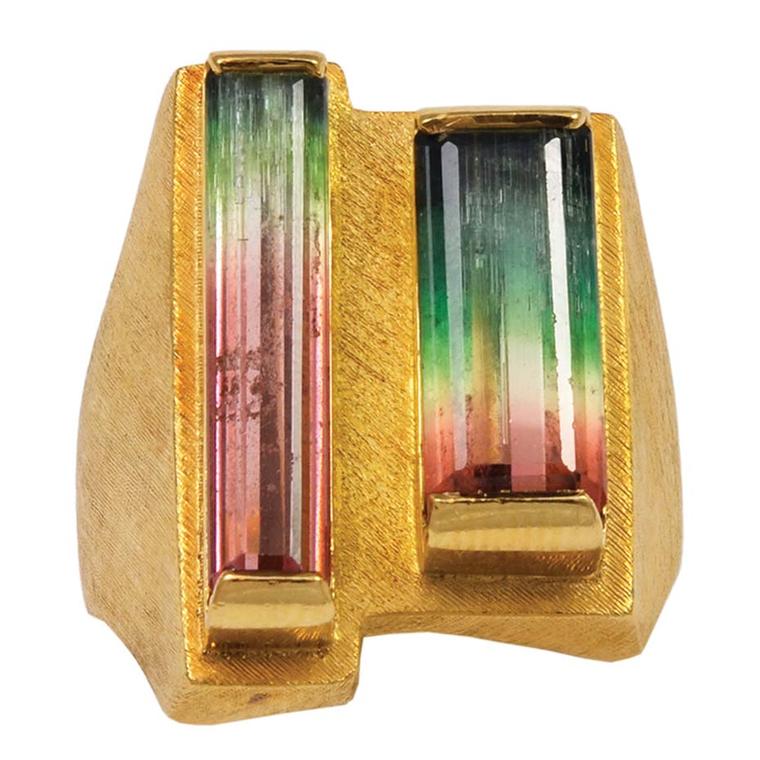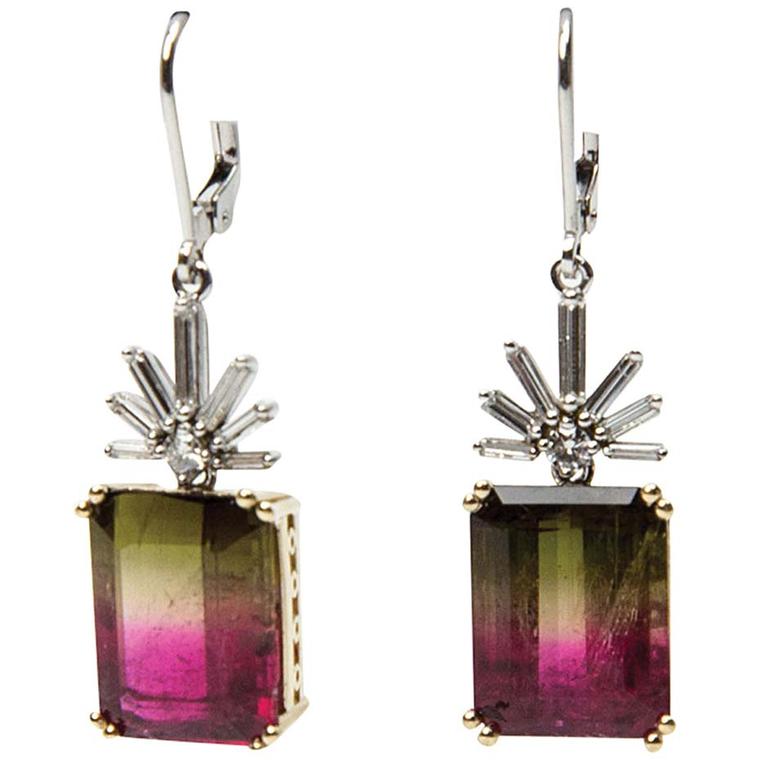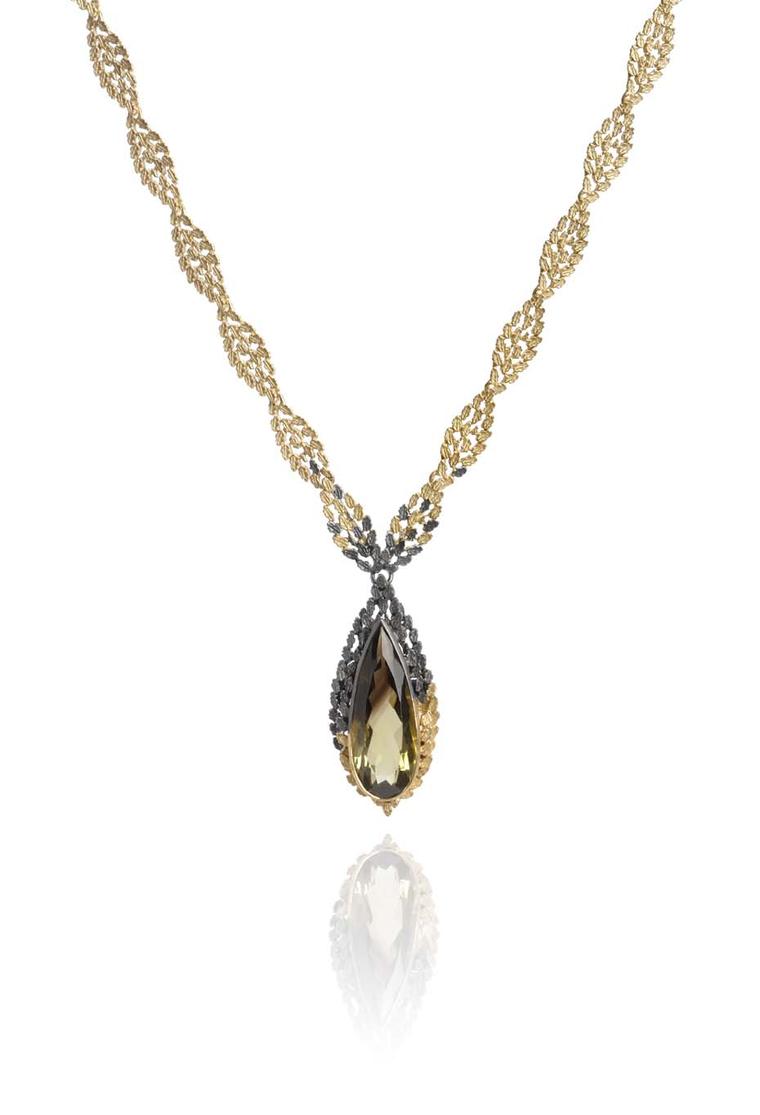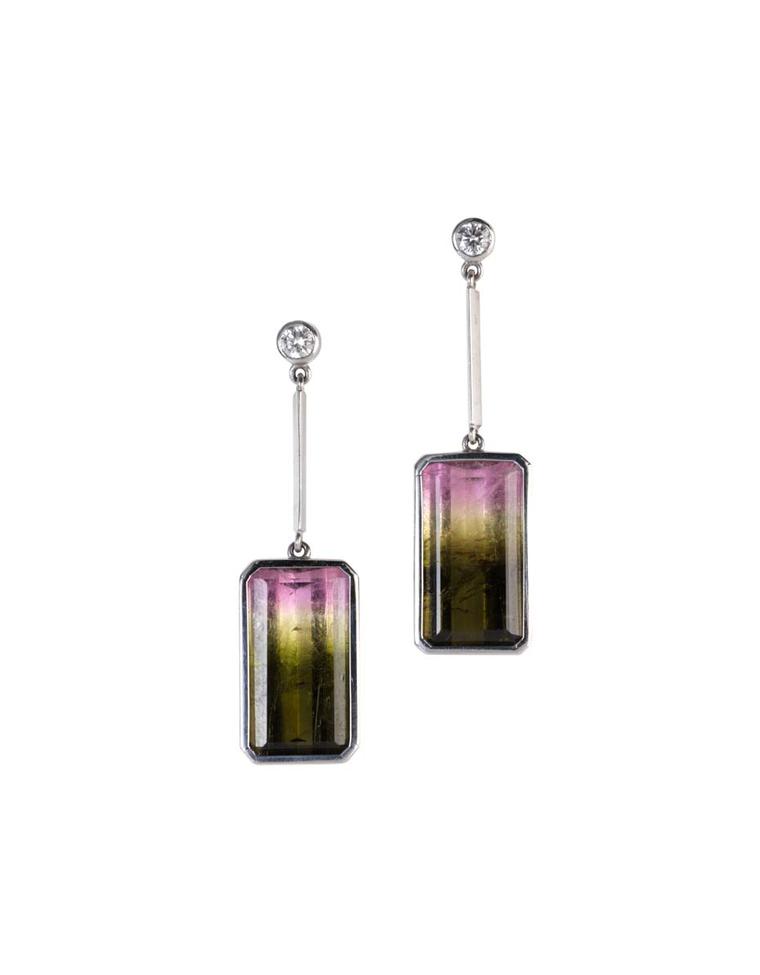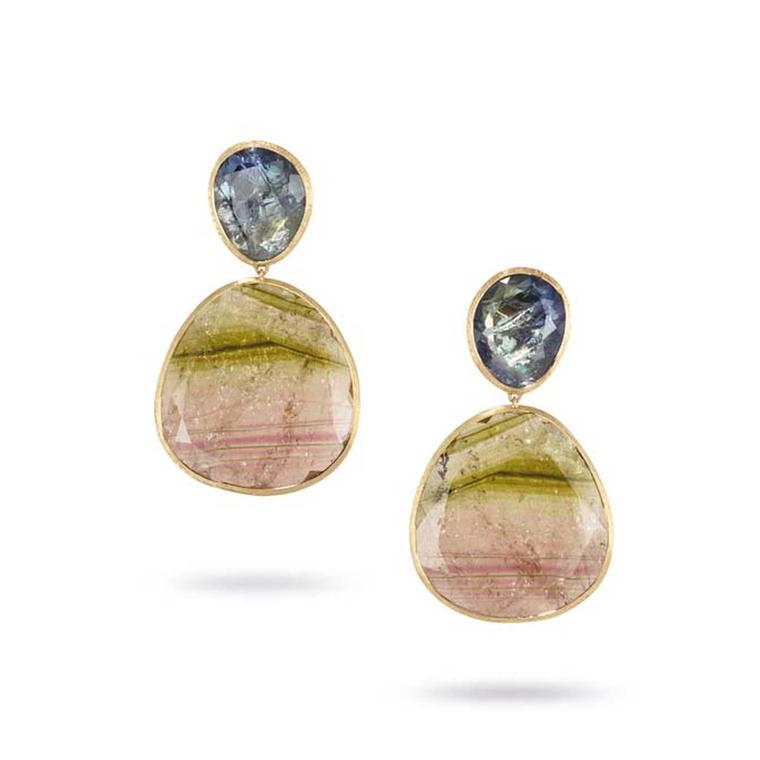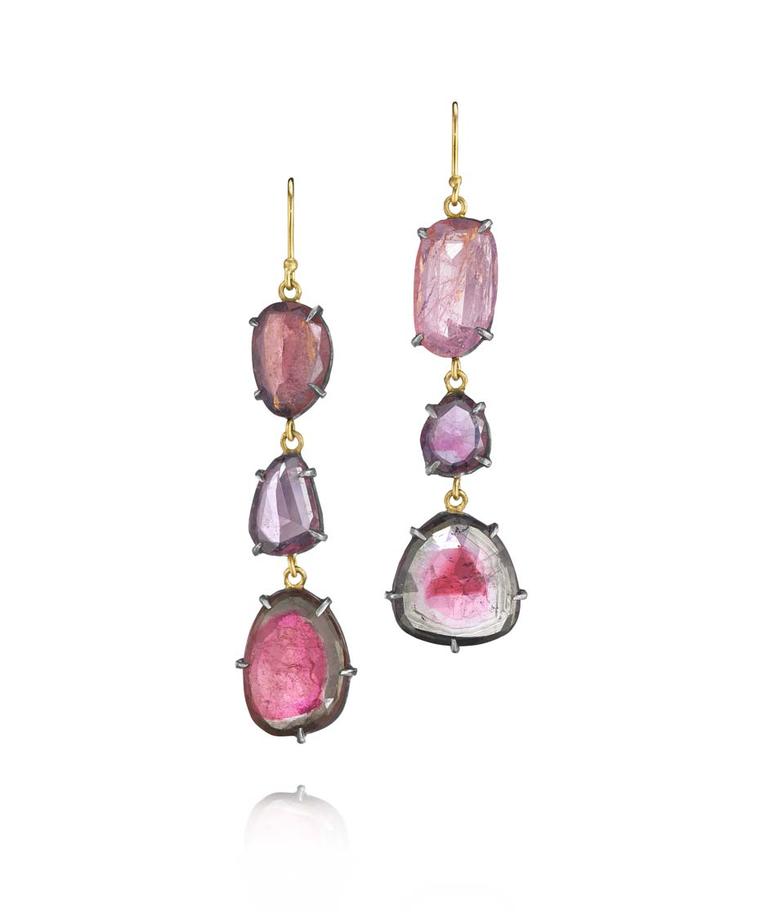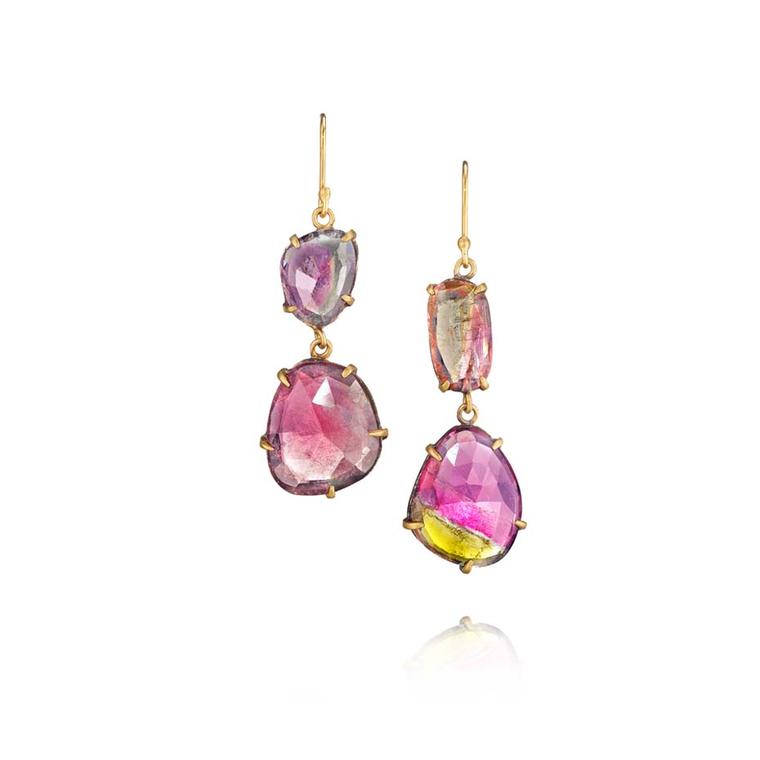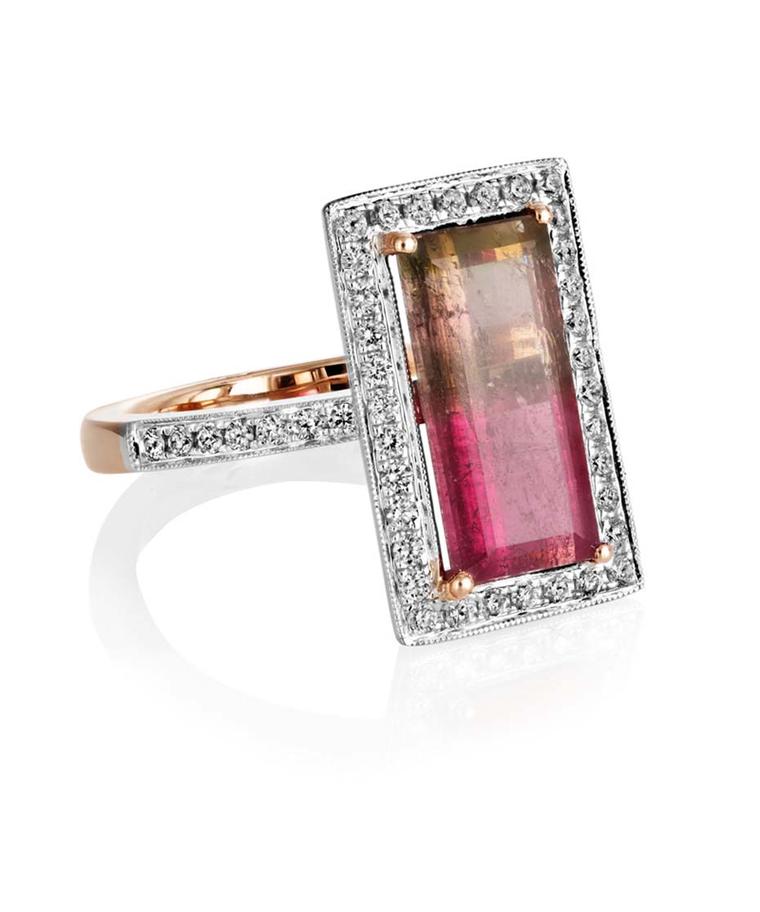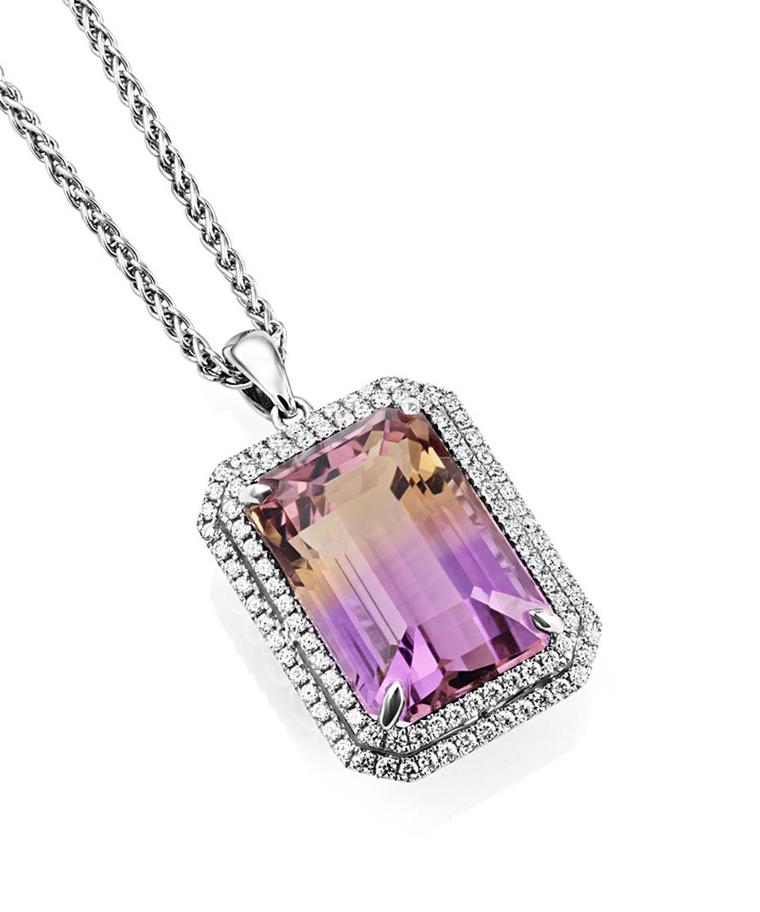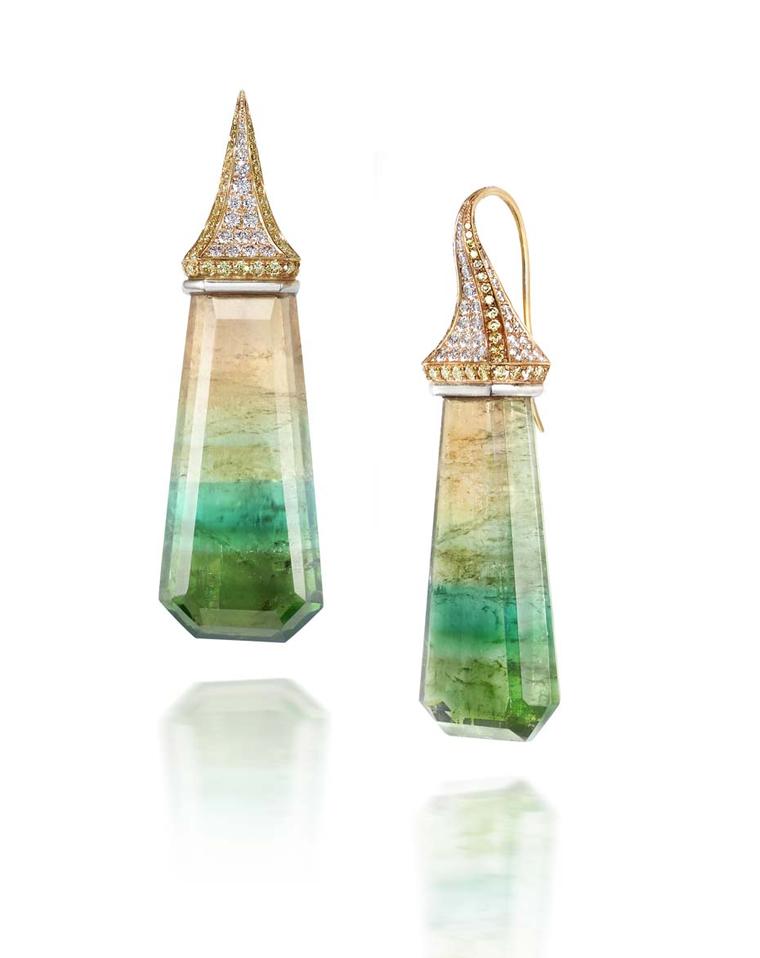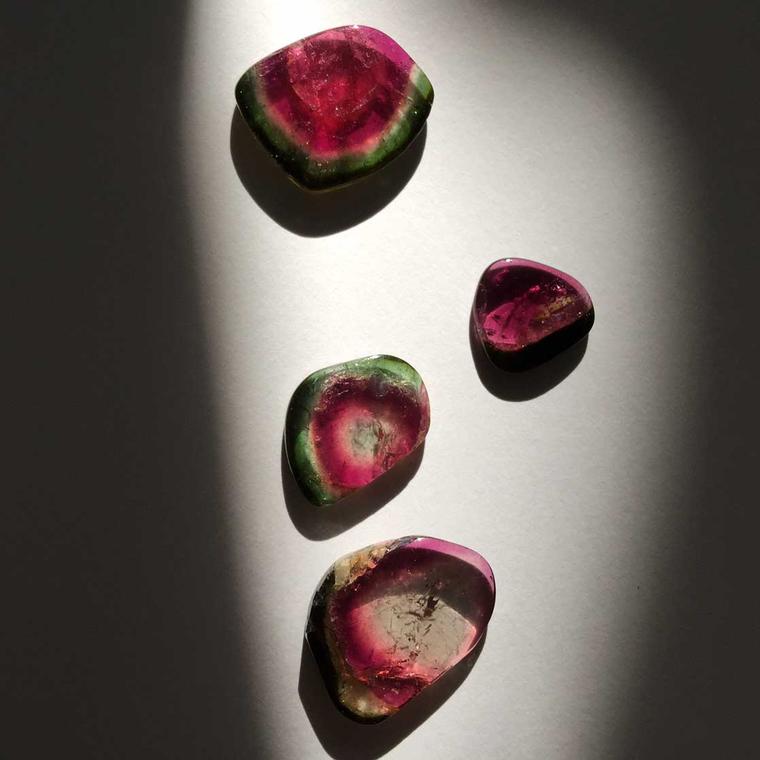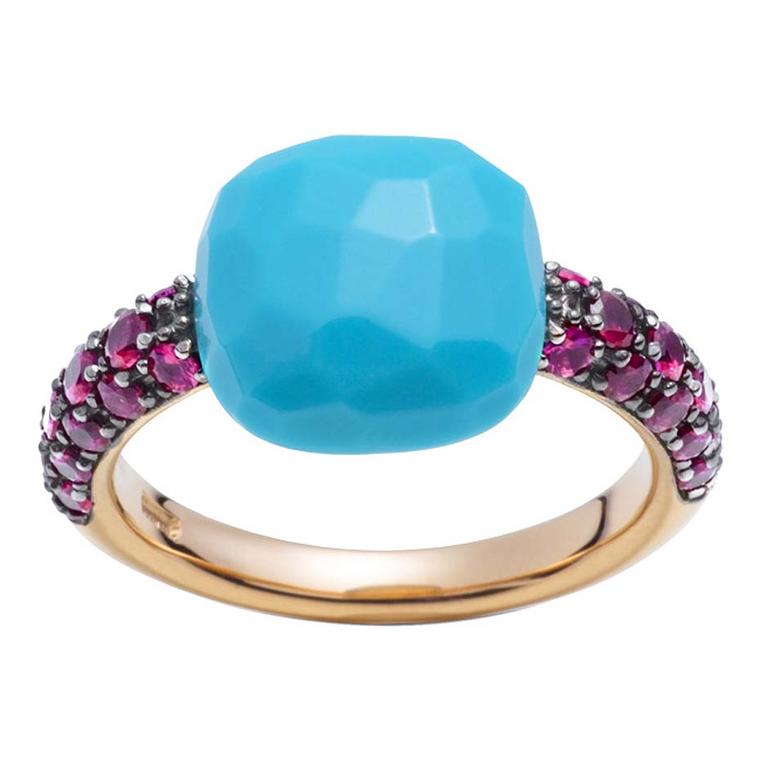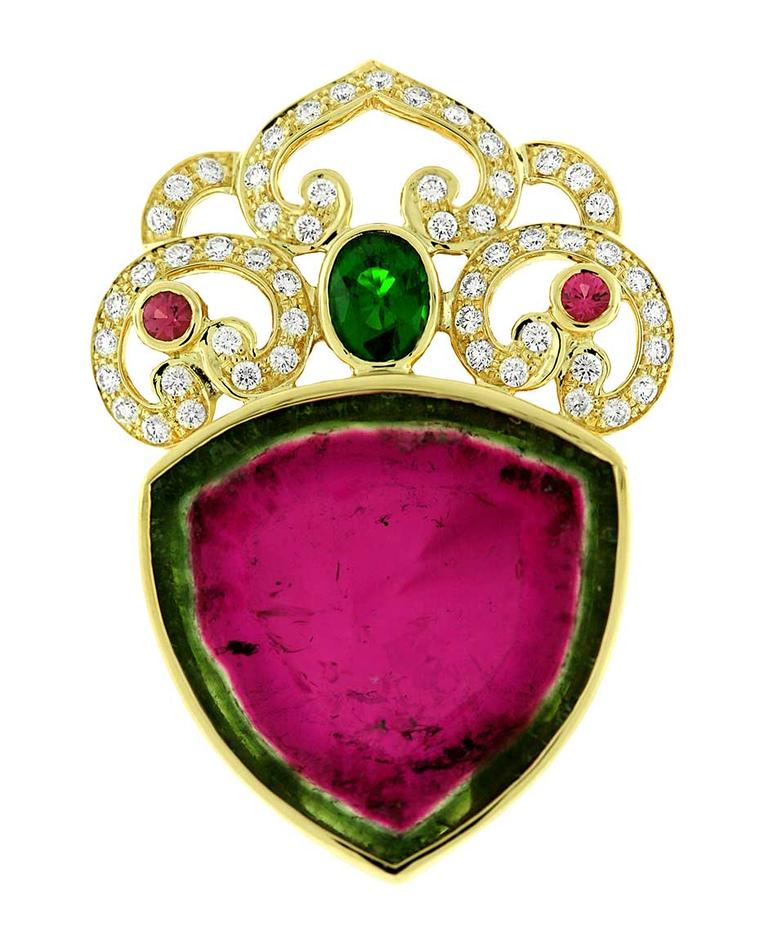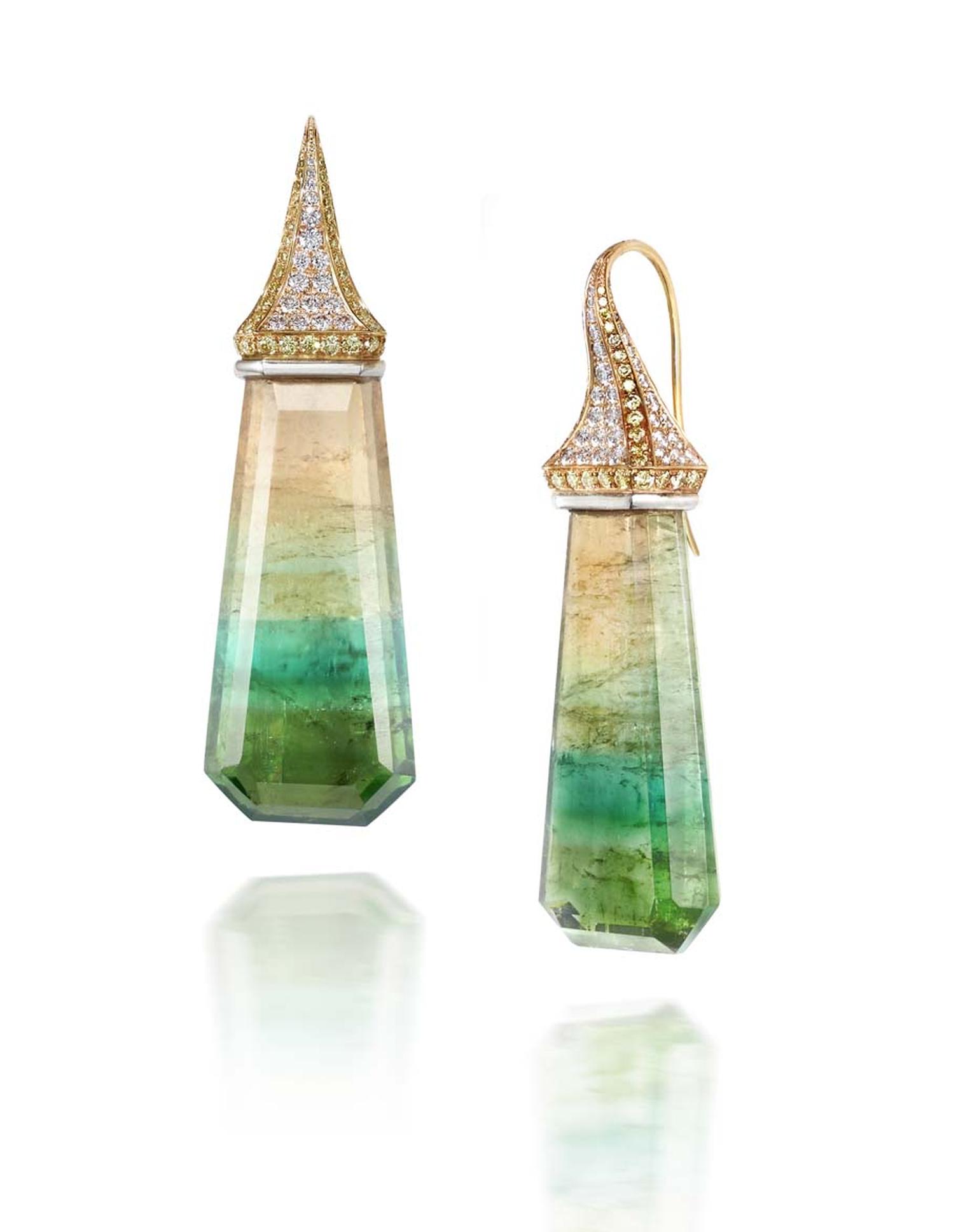
By Rachael Taylor
They seem almost too strange to be real, but gemstones containing more than one colour are a genuine geological treat, and this colourful split personality is lending real drama to new jewellery designs.
"Many customers have not seen ametrine before," says British jeweller Sheldon Bloomfield, who specialises in unusual gems and works with a number of bi-coloured gemstones including ametrine. "I've done shows for my clients where members of the public have asked whether I've glued two stones together."
Needless to say, Bloomfield has not been indulging in gemmological DIY. What actually happened was a fusing of amethyst and citrine - hence the name - created by the quartz developing at different temperatures while underground, and so making two colours. Ametrine's bright clash of orange and purple is invigorating, and as these coloured gemstones are found in fairly large sizes - usually between 10ct and 30ct - they make for great statement jewels, such as Bloomfield's cocktail rings set with hand-carved ametrine.
The geological forces responsible for this variegation are not exclusive to ametrine - many gemstones can display quirks of colour. Popular bi-coloured gems include watermelon tourmalines that display a mouth-watering split of bright pink-reddish tones and green, colour-change sapphires that morph from pink or yellow into blue, and citrines that rupture from orange into black.
Read more about watermelon tourmalines
Beth Gilmour, one of London Fashion Week's Rock Vault jewellers, first discovered two-toned gems by chance while on an overseas buying trip. "It was love at first sight," she recalls. "I thought they were amazing and so unlike anything else I'd seen before. By nature, each one is unique and I like knowing I'm wearing something unlike anything else." Gilmour made ametrines, bi-coloured quartz and two-tone citrines the stars of her Dichroma collection, setting them in multi-toned gold to complement the gems, which was created by mixing and matching alloys.
For Margery Hirschey, a jeweller based in New York who originally started her career as a painter, it is the unorthodox nature of the coloured gemstones that appeals. Her organically styled earrings are wild, sporadic, tumbling gem strips of every colour, shape, cut and inclusion she can find, and precious stones with more than one colour fit in perfectly in these imperfect designs.
"When I first started designing, I didn't have that many stones, and rarely matching ones, so I had to use what I had and that's how I started designing asymmetrical earrings, which I love, and have become a hallmark of my work," says Hirschey. "Gemstones that have variations in the colour and inclusions look like they have a history. They look real. Perfectly coloured, flawless stones might be rare in nature, but to me they look like nothing more than glass. I choose stones that have personality - imperfections and all."
While truly exceptional gemstones will always be identified by perfection in clarity and colour, eccentric bi-coloured gems are fantastically captivating and a pleasant reminder of our jewellery's subterranean beginnings.


